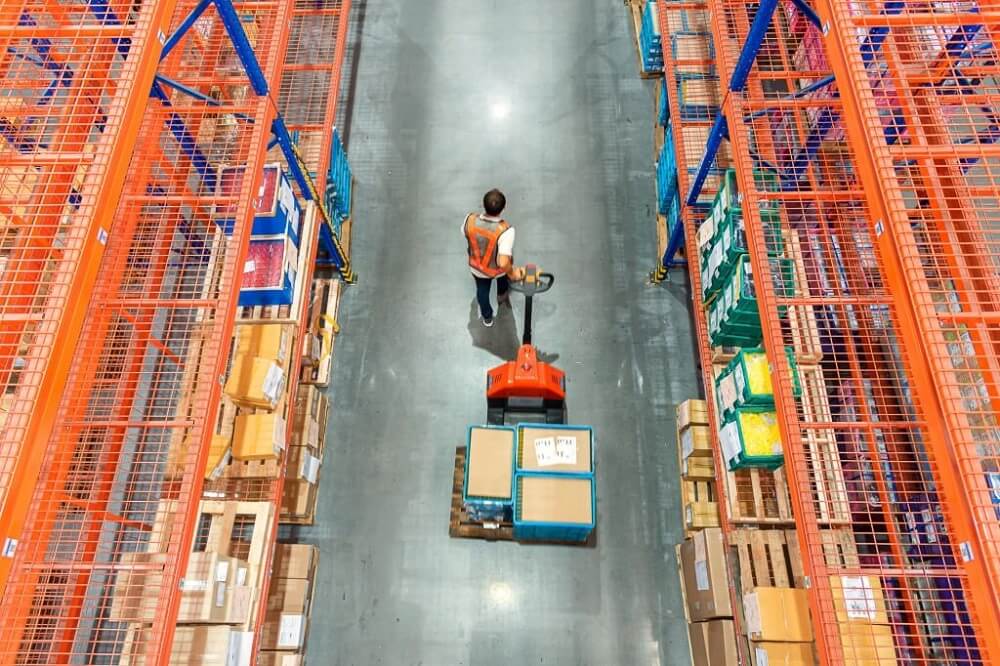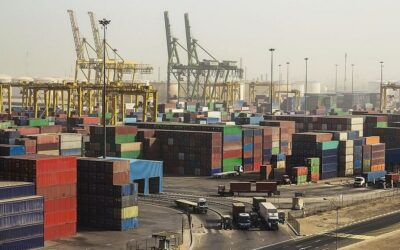The Impact of COVID-19 On Supply Chains Across The World
As the virus took its hold in China, the manufacturing industries suffered a lot owing to the lockdown of the general public and border & flight restrictions on China. Now as the coronavirus became a global pandemic, the whole world is under a dark cloud. It has spread to almost 210 countries according to the latest reports and had a devastating impact on the economies of the countries. With every day the new cases and death toll curve is getting steeper globally. After traumatizing China, the novel coronavirus targeted Italy and Spain making them the new epicenter in Europe.
Table of Contents
Effects on Supply Chain:
Although the Chinese have succeeded in flattening the curve in their own country and, Italy and Spain have partly overcome the crisis, the virus is wreaking havoc in America and the United Kingdom now. The whole world has witnessed how the virus has brought many countries of Global North on their knees. Experts from WHO fears that the next target of the virus could be South Asia. Most governments fearing the spread have imposed lockdown in their countries. Businesses around the world are experiencing an unprecedented crisis. Huge disruptions in the supply chain, closure of business, manufacturing, and problems in the supply network.
The supply chains across the world are facing both existential and short term challenges. Essential supplies including food and medicines need to be moved which is becoming a problem. The panic buying is resulting in a hike in prices, shortage of availability, and disruptions in the supply chain.
Manufacturing lines:
China has been acting as the production hub for the last many years. Global manufacturers had to halt their operations worldwide as they relied on bulk components from Asia. Raw or processed materials were imported from China, but the Isolation and lockdown lead to a shortage of global supply networks.
Now, as more countries are imposing lockdown and travel restrictions the production lines in other parts of the world are also being affected. The manufacturing industries for automotive, electronic, medical supplies, etc. have been largely affected due to the lockdown and border closures. Businesses had to suspend production operations. Honda, Toyota, and some other automobile manufacturers had to close the factories due to isolation restrictions in Vietnam.
Domino Effect:
As the factories have reopened and the lockdown lifted, businesses have started in China, people are returning to jobs, markets have opened. Domino effect of the closure of Chinese manufacturing on global markets. For instance, the working capacity was already reduced before the worldwide spread, and the organizations were struggling for Raw input. But now as ports are re-opening in Wuhan but the other ports are closing in the rest of the world. The Borders closure is leading to limited trade.
Labour Problems:
The organizations are taking time to resume normal productions because even if the restriction policies for factory operations have been relaxed, there is a shortage of labor as many people are still trapped in villages or outskirts due to lockdown. So the transportation network needs to be recovered. The organizations are also facing supply problems from low-tiers. Along with that the lack of protective gear for workers is also a hurdle.
How Supply Chains are adapting:
China has provided hope to the rest of the world by stopping the further spread in the country. Very few new cases of local transmission were reported in the last few weeks. And the lockdown on Wuhan, the place of origin of the virus has been lifted. Life seems to be getting normal again apparently. But in reality, there is so much to do to recover from the economic crisis. It will take time for production companies to work like before.
New Policies:
Moreover, Companies are looking for alternate ways to ensure efficient working of the global supply chain. New policies, innovation, and a lot of hard work are needed to make the supply chain more resilient.
Secondary and Tertiary Suppliers:
Due to the lockdown and isolation policies in different countries has caused some delays in the transportation of the products. Some companies are shifting to secondary or tertiary suppliers to fulfill the missed deliveries.
Retooling:
Many organizations are opting for retooling. Responding to the hour of need, some companies are re-tooling production. The owners of Distilling companies are making hand sanitizers and disinfectants. Automobile manufacturers in China also made medical face masks to reduce the spread and to generate the revenues and positive reputation of the company. Similarly, some textile designers in Pakistan started making face masks and PPE’s to help fight the COVID-19 spread.
Chartered Transportation:
Some organizations are proposing to send chartered transportation, buses, and airplanes to bring back their workers and resume the work.
Automation:
Many organizations are automating their operations. Adopting automation as an alternative for the labor workforce in the supply chain will help the companies a great deal. The 3-D technology, automated vehicles, and automation in the warehouse operations have proved to be really beneficial options now.
Workforce Policies:
The companies are introducing technology in rash training for newly recruited labor and many are halving the sites and fixing alternate days for workers. Some are even considering the hourly labor option at critical points in the supply chain as an alternative for the labor force.
Shifting from Sole Suppliers:
Many organizations are shifting away from sole suppliers to deal with uncertain situations including lockdown, trade wars, etc. For instance, Tesla shifted from Panasonic alone to CATL for batteries.
Future lessons:
The companies must accept that not just the cost, quality, and delivery need to be the priority. The supply chain managers need to develop the efficiency to deal with Natural disasters, climate changes, geopolitical tension that could create disruptions. Supply chains can’t be developed overnight, effort and time are required, and once made, it’s very difficult to change quickly. Therefore new strategies need to be implemented for a flexible supply chain to make it more resilient and responsive.
Food supplies
As per reports people around the world due to the pandemic panic went for panic buying. The behavioral change over food security could create a food supply chain crisis and could have a devastating impact especially for low-income countries, health, and education sectors. Moreover, the African and Middle Eastern countries are most vulnerable to face acute food insecurity.
Transportation Challenges:
Potential disruption across the transport routes and quarantine measures are delaying the transportation of fresh produce on one hand and also resulting in difficulties for farmers to access the markets.
The airline industry is suffering a lot. Cash reserves of the airline sector are facing a loss. Some of the airlines have already been pushed into bankruptcy and others have no option but to violate the debt covenants as numerous airlines had to cut their flight capacity. The flight and cargo operations across the world have been drastically reduced. America is limiting its flight operations by almost 75% till May and several European airlines have reduced the flight capacity by 90%. The government will have to coordinate with the airline sector to avoid a greater loss.
There has been a considerable decrease in air traffic; like never before. The commercial flights were reduced by almost 55% by the end of March and the situation is still getting worse. This is going to have severe consequences on world trade as the commercial flights carry a considerable value of world cargo. The strain is already being felt as the freighter capacity is rising with the belly capacity declining.
Consumption Market Down:
As the fear of pandemic is rising due to an exponential rise in cases, the consumption market is going down. Due to low demand air freights will rise
Online shopping
The pandemic where on one hand proved to be disastrous for some and brought opportunities for others. According to reports, online grocery shopping has jumped






